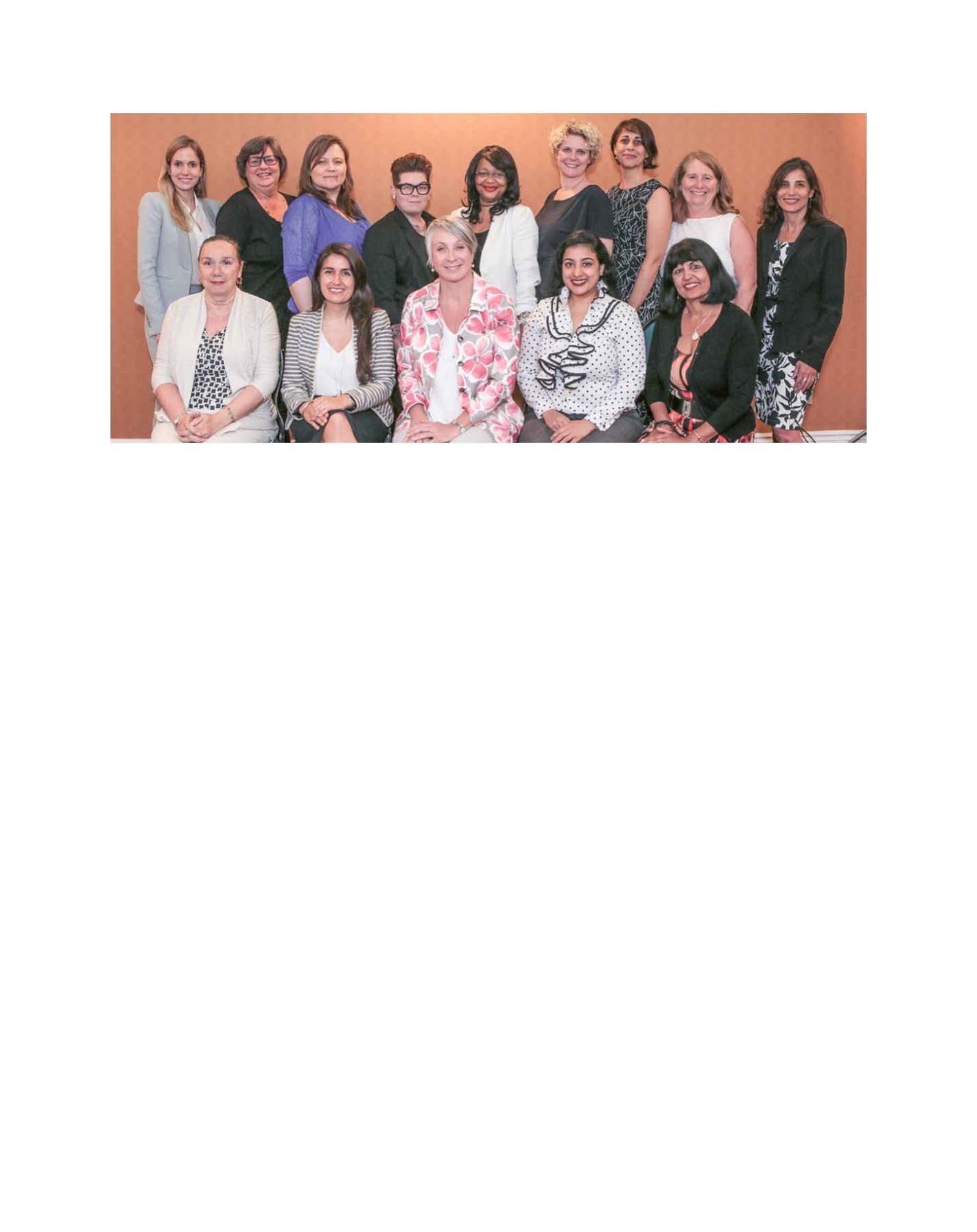

[
] 45
The many participants also spoke about a deep desire
for reconciliation between Indigenous and non-Indigenous
Canadians. We believe that the basis of reconciliation is
creating a better understanding of the effects of racism and
discrimination against Indigenous peoples. We also believe
that we must foster a climate of respect for Indigenous culture
and its enormous contributions to Canada.
An independent
National Commission of Inquiry into
Missing and Murdered Indigenous Women and Girls
was
officially created on 8 August 2016. The commission has
a mandate to examine and report on the systemic causes
behind the violence experienced by Indigenous women
and girls. By looking for patterns and underlying factors
that explain why higher levels of violence occur, we hope
to understand why Indigenous women and girls are more
vulnerable to violence than others.
The commission will examine and report on contributing
historical, social, economic, cultural and institutional factors.
It will examine the effects of policies and practices of govern-
ment bodies such as police forces, child welfare agencies,
coroners, and others. The mandate is expected to be complete
by the end of 2018 and we are looking forward to seeing the
recommendations for action.
At the same time, we know we cannot wait for the results of
the commission before we take action. That is why we are also
engaged in consultations and discussions on the development
of an overall federal strategy on GBV.
To do so, we are focused on six main objectives:
• the federal scope
• emphasising prevention
• embracing diversity
• respecting survivors
• finding evidence
• forming partnerships.
In June 2016, I created an 18-member Advisory Council
to provide guidance on the engagement process and to
help develop the strategy. The council acts as a forum for
exchanging views on best practices and research related
to GBV.
The members of the Advisory Council represent a broad
range of expertise and include experts in violence prevention
and alternative gender identity such as lesbian, transsexual
and transgender issues, and engages men and boys.
I also convened a series of roundtable discussions on the
issue bringing together over 300 individuals from all key
sectors. One of these was a scientific panel of recognized
Canadian researchers who took stock of the current knowl-
edge on risk and protective factors and on evidence-based
preventative interventions. We also conducted a targeted
survey of key experts who could not attend the roundta-
bles and a more general survey of over 7,500 Canadians to
gather opinions and perceptions regarding the federal role
and priorities for action on GBV.
In addition, I have met with survivors of GBV from across
the country to hear first-hand experiences of victimization
and its consequences. I’ve also listened to survivors’ views on
the priorities we should pursue.
Hearing first-hand experiences and the ideas and perspec-
tives of experts in the field will inform a collaborative,
comprehensive, evidence-based and accountable strategy that
will move us closer to the elimination of GBV in this country.
Through a much firmer commitment on GBV and a
resulting national conversation, Canadians are gaining a
better understanding of the roles and responsibilities of
the federal government and why this issue is so integral for
gender equality here and around the world.
Violence against women in our society, and in societies
around the world, has been ignored for far too long. We
know the path to reducing and eliminating it altogether will
not be easy or smooth. But we are committed to finding
solutions and working toward the day when all women and
girls will have an equal opportunity to thrive in safe homes
and communities.
Minister Patty Hajdu with members of her Advisory Council on Gender-based Violence
Image: SWCCFC
G
ender
E
quality
and
W
omen
’
s
E
mpowerment
















